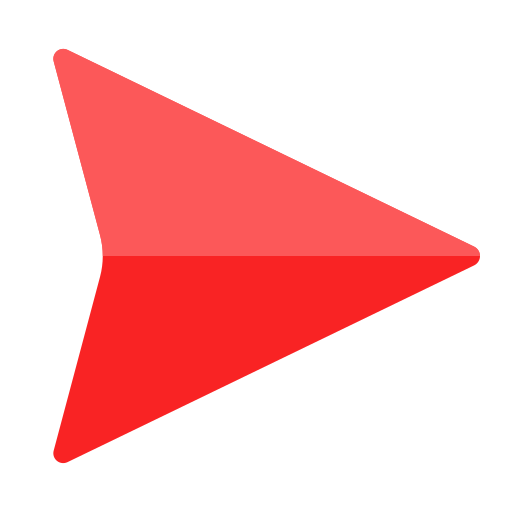Introduction
In the nuanced realm of Social Security Disability (SSD) law, the development of a comprehensive marketing plan is not just a necessity but a strategic imperative. Many SSD firms and representation companies initially seek out singular services such as TV, SEO, PPC, or buying leads. However, a deeper conversation often reveals the need for a more holistic approach. This article aims to guide SSD law firm principals in creating a marketing plan that mirrors the diversification and strategy of personal investment planning.
The Parallel of Marketing and Personal Investment
Just as a prudent investor diversifies their portfolio across 401k's, IRAs, high-yield savings accounts, ETFs, stocks, real estate, and alternative investments, an SSD firm must diversify its marketing strategies. This diversification should align with the firm’s goals, acknowledging that different marketing elements may yield results at varying times and costs per case.
Understanding the SSD Market
The SSD market is unique, with clients who are often facing challenging life circumstances. Understanding this demographic is crucial for effective marketing. According to the Social Security Administration, millions of Americans apply for SSD benefits annually, presenting a significant market opportunity for law firms. Personally, most of us know someone applying for SSD or on SSD benefits, whether a family member or friend. However, reaching and effectively communicating with this audience requires a nuanced understanding of their specific needs and challenges.

Key Elements of a Comprehensive SSD Marketing Plan

Our experience has shown that the most effective elements in any SSD firm marketing and case acquisition plan include:
- Branded PPC, TV, and SEO: These digital and traditional media strategies are essential for building brand recognition and reaching a wider audience. For instance, Google Ads can target specific keywords related to SSD claims, while TV spots can reach a broader demographic that may not be as internet-savvy. SEO on the other hand, is a long-term strategy for building brand recognition through thought leadership (high-quality) content.
- Classic Approaches: Client referrals, professional referrals, networking, speaking engagements, and print materials (including newsletters, birthday cards, holiday cards, etc.) remain valuable for establishing trust and maintaining relationships. These methods have stood the test of time and continue to be effective in building a strong community presence.
- Leads: These are crucial for direct client acquisition, volume, and achieving a goal cost per case. They provide a direct line of communication with potential clients and can be a rich source of high-quality leads and case conversions.
- Internal Firm Programs and Case Process: Optimizing these aspects ensures efficiency and client satisfaction. A well-organized firm can handle cases more effectively, leading to better outcomes for clients and more referrals in the long run.
- Branded Video and Social Media: These mediums are increasingly important in a digital-first world, offering engaging ways to connect with potential clients. Platforms like YouTube, Twitter, and Facebook provide opportunities to share informative content that can help establish the firm as a knowledgeable and trustworthy authority in SSD law.
Balancing the Marketing Mix
It’s important to understand that solely purchasing leads or focusing on a single medium like TV or SEO is insufficient. A balanced approach is crucial. While not all elements need to be implemented simultaneously, the plan should include most, if not all, of these strategies over time, tailored to the firm’s size, capital access, and growth objectives.
ROI and Timelines

Different strategies will yield ROI over varying timelines. Branded campaigns without paid media may take longer to build but can provide long-term case sources and community recognition. Conversely, paid media campaigns might achieve quicker results but require sustained investment. For example, a well-executed PPC campaign can generate immediate leads, but building a strong SEO presence is a long-term endeavor that can provide sustained organic traffic over time, and residual calls and cases.
Analyzing Costs and Case Quality
When adjusting your marketing budget, consider not just the cost per case but also the quality and administrative costs involved. Some sources may offer a low initial cost per case but have higher attrition rates or yield cases with lower average fees. Regularly reviewing these metrics is crucial for understanding the true value and effectiveness of each marketing element.
The Challenge of Tracking, attribution, and reviewing data
The extended timeline of SSD cases significantly complicates tracking the effectiveness of marketing efforts. Unlike industries with shorter sales cycles, SSD law firms cannot immediately correlate marketing efforts with case resolutions and revenue, and must review data over long time periods.
However, with an agency assisting firms in both branded and unbranded SSD marketing efforts, review of attribution and ROI can be done. While unique tracking numbers and posting can help nail down attribution of most calls/forms and leads, some leads may not be attributed 100% to one lead source. There are times when potential clients may see a TV ad, go to the website, see a PPC and and then go back to the website when they call in. That lead has obviously been reached using a multipronged approach, and although attributed to the website tracking number, is in fact a lead and case generated from multiple mediums. Its important to keep this in mind when reviewing results. We find that its best to review leads that can be directly attributed to a source, revenue generated over the long term, AND to look at the firm/advocacy company's overall increase in case volume since starting marketing efforts.
Best Practices for Accurate ROI Tracking

- Implement Advanced Tracking Systems: Utilize CRM (Customer Relationship Management) systems that can track client interactions over extended periods. These systems should be capable of recording initial client contact sources and following the client's journey through the entire case lifecycle.
- Use Multi-Touch Attribution Models: Instead of attributing a client conversion to the last touchpoint, multi-touch attribution models, as discussed in the Journal of Marketing Research, distribute credit across several key interactions. This approach acknowledges that multiple marketing efforts contribute to converting leads into clients.
- Establish Milestone-Based Tracking: Break down the case process into milestones and track marketing effectiveness at each stage. For instance, measure how many leads from a specific source reach significant case milestones, such as initial consultation, case filing, and case resolution.
- Longitudinal Data Analysis: Engage in longitudinal studies of your marketing efforts. Track and analyze data over several years to identify trends and patterns. This method, as detailed in the Harvard Business Review, helps in understanding the long-term impact of marketing strategies.
- Regularly Review and Adjust Marketing Mix: Given the long payout period, it's crucial to regularly review the performance of different marketing channels and adjust strategies accordingly. This iterative process ensures that the marketing mix remains aligned with changing market dynamics and firm objectives.
- Client Feedback and Surveys: Regularly gather feedback from clients regarding how they found your firm and why they chose your services. This qualitative data can provide insights that quantitative data might miss.
- Peer Benchmarking: Compare your marketing performance metrics with industry benchmarks. This comparison, as suggested by industry reports from sources like the Legal Marketing Association, can provide an external perspective on your marketing effectiveness. You can simply review past firm data, talk to your vendors/partners, and talk to colleagues and other firm owners to discuss benchmarks.
KPIs to Focus On

- Cost Per Case and Attrition Rate: Track the initial cost per case, labor and time involved in converting a case, and the rate at which cases drop off.
- Conversion Rates: From lead to client, how effective are your channels?
- Average Fee Per Case: Higher fees may justify higher acquisition costs.
- Client Lifetime Value (CLV): As suggested by Bain & Company, CLV is a critical metric for long-term success. In SSD know your average fee generated when cases are won.
Optimization Through Technology and Staffing
Leverage CRM systems to manage client relationships and track conversions, as Salesforce recommends. Additionally, ensure your team is aligned with your marketing goals, as their buy-in is crucial for success. We will cover this topic in greater detail in a future article.
Conclusion
In upcoming newsletters, we will delve deeper into each of these marketing mediums and case sources. We will also explore challenges such as compliance and risk, along with best practices for case processing, from intake to case management. Remember, crafting a comprehensive SSD marketing plan is a dynamic process, requiring regular review and adaptation to ensure alignment with your firm’s goals and the evolving market landscape. If you find this overview beneficial, please share.





 Home
Home